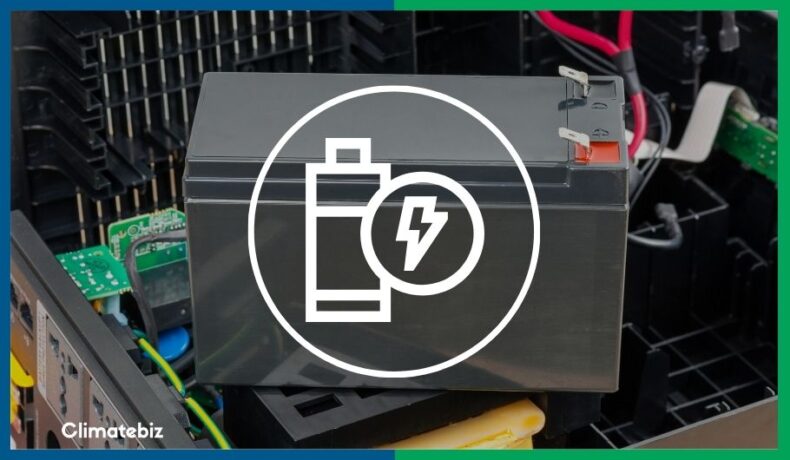Bought a new solar battery system? Considering purchasing one? Just curious about batteries? Whatever the case this article will answer your questions regarding solar battery maintenance.
The sun is a natural source of energy, which we can harness by using solar panels. However sunlight isn’t always available, this is where solar batteries come into play. They store the energy generated by your solar panels and convert it to electricity when you need it.
However, without proper care, they can quickly become damaged or even die in a matter of months; leaving you with expensive repairs and no power.
Therefore, solar battery maintenance is important to keep your battery running optimally, for as long as possible. In order to do so, you must know how to care for your solar battery correctly.
By following a few simple guidelines, you can keep your solar battery in good working condition and get the most out of it.
In this article, we’ll discuss solar battery maintenance in detail. Properly maintaining some of the latest solar battery technologies — namely AGM, Gel, LiFePO4, and hydrogen batteries — will receive special attention.
Table of Contents
Do Solar Batteries Need Maintenance?
The latest solar battery technologies are often advertised as “maintenance-free”, but there’s more to it than meets the eye. Why? We’ll explain shortly.
The main types of solar batteries are:
- Flooded Lead-acid (FLA); sometimes referred to as “wet lead-acid battery”.
- Valve Regulated Lead-Acid (VRLA): Absorbent Glass Mat (AGM) and Gel battery.
- Lithium Batteries: Lithium Iron Phosphate (LiFePO4) batteries are the best pick for solar energy storage.
Additionally, hydrogen Batteries are starting to become available for home-usage.
Although they’re a more expensive option for your solar battery system, they offer great advantages. They last much longer, don’t contribute to carbon emissions and are more powerful and energy-efficient than fossil fuels. What’s more, these batteries obtain hydrogen from water.
Apart from the flooded lead-acid battery, all the other battery technologies are advertised as being “maintenance-free”, because you don’t have to do anything for them to work after installation.
Lead-Acid Batteries: Flooded And Sealed
If you don’t perform solar battery maintenance on a flood-lead acid battery from time to time, it’ll be damaged and stop working.
That’s because the electrolyte is lost in the charging process; hydrogen gas is released and lead electrodes become exposed. This causes sulfation of the battery’s lead plates, which reduces the battery’s usable capacity.
Conversely Valve Regulated Lead-Acid batteries (also called sealed lead-acid) don’t suffer from this problem. In AGM batteries, the electrolyte is soaked in the glass mat material, so that electrolyte and separator essentially become one.
In Gel batteries, silica dust is added to the electrolyte to form a mixture that thickens into a putty-like gel when injected between the cell’s plates. This gel acts as a separator, instead of the glass mat.
Much like the AGM, this technology is spill-proof, meaning you can mount it in any orientation. Additionally, it doesn’t require venting (to vent the hydrogen gas).
However, just because you don’t have to perform any maintenance in order for them to work, it doesn’t mean that they will work ideally and last as long as they can.
To keep your battery running at top performance and for as long as possible, there are a few practices you can follow.
How To Maintain An AGM Battery?
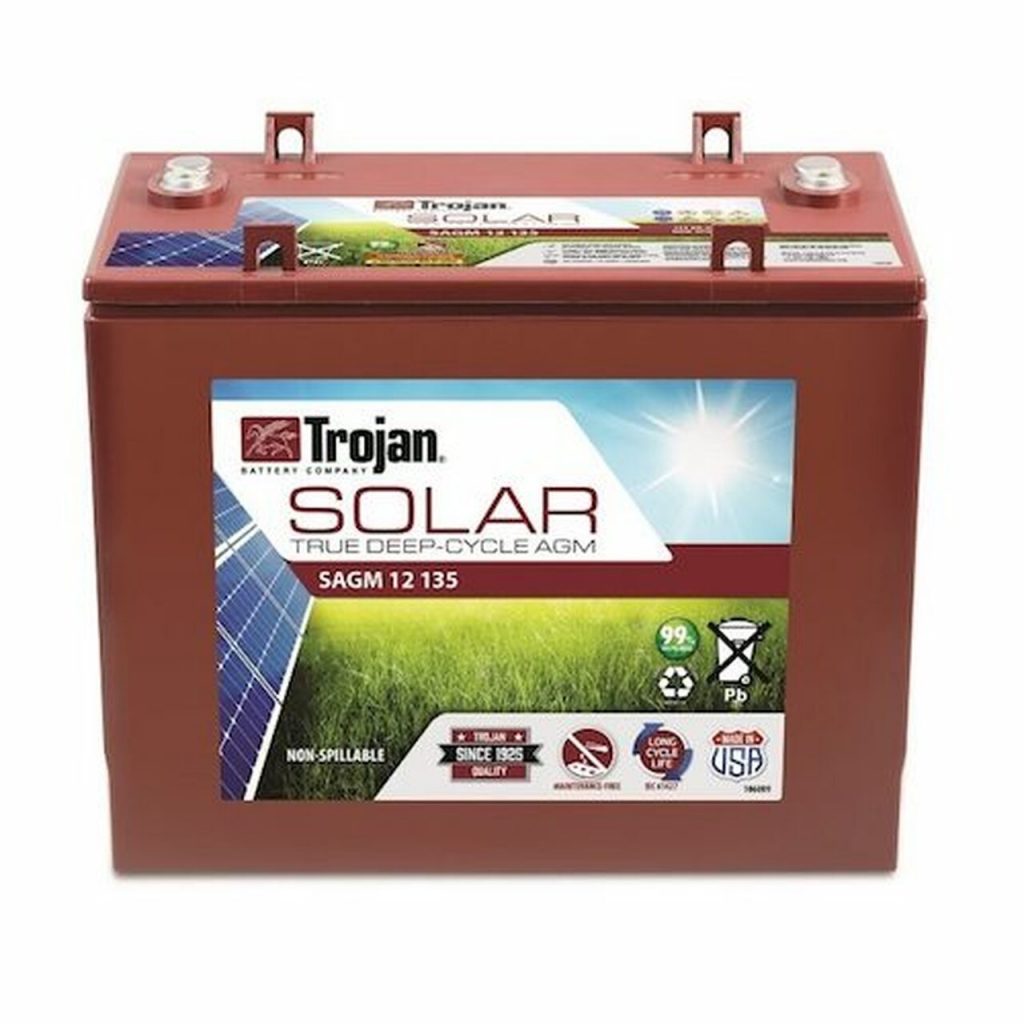
Source: sunwatts.com
Respect The Recommended Depth of Discharge (DoD)
Manufacturers recommend discharging AGM batteries only 50% if you wish to obtain the optimal number of cycles your battery can perform. Therefore, you should always discharge your AGM battery only until 50% state of charge, then fully recharge it before using it again.
Use The Recommended Charger
This ensures the delivery of the correct charging voltage to your AGM battery, which is very important to maximize your battery’s performance and life cycle.
Charging Stages
Lead-acid batteries go through different charging stages (bulk, absorption, float, and equalization). These are important to maintain your battery’s performance and ensure your get the most out of them. So using a smart charger that controls these different stages can be really advantageous.
Prevent Sulfation
Keeping your battery in a discharged state can lead to sulfation (build-up of lead sulfate crystals on the surface of the active material of the battery’s lead plates). Sulfation reduces the battery’s ability to hold a charge, which consequently shortens the battery’s lifespan.
Store Them Correctly
Due to its high self-discharge rate, when not using your AGM battery, you should regularly (every 2 to 3 months) recharge it to avoid deep discharge, which is very damaging to lead-acid batteries. In addition, make sure you store them in a dry, cool, and ventilated area.
Charge Them In The Correct Temperature Range
During the charging process, extreme external temperatures can cause the battery to charge erratically. The internal temperature of the battery can rise until a point where the battery can no longer sufficiently receive external power. This results in a partial charge, which is harmful to lead-acid batteries. Ideally, AGM batteries should be charged between 0ºC(32°F) and 40ºC(104ºF).
Never Partially Charge AGM Batteries
AGM batteries must be fully charged to 100% in order to maintain their capacity. If you charge AGM batteries partially, they’ll lose their ability to charge to full capacity over time. For instance, If you constantly charge your AGM battery to only 70%, it may eventually fail to charge past this point. This, in turn, reduces the lifespan of the battery.
How To Maintain a GEL Battery?
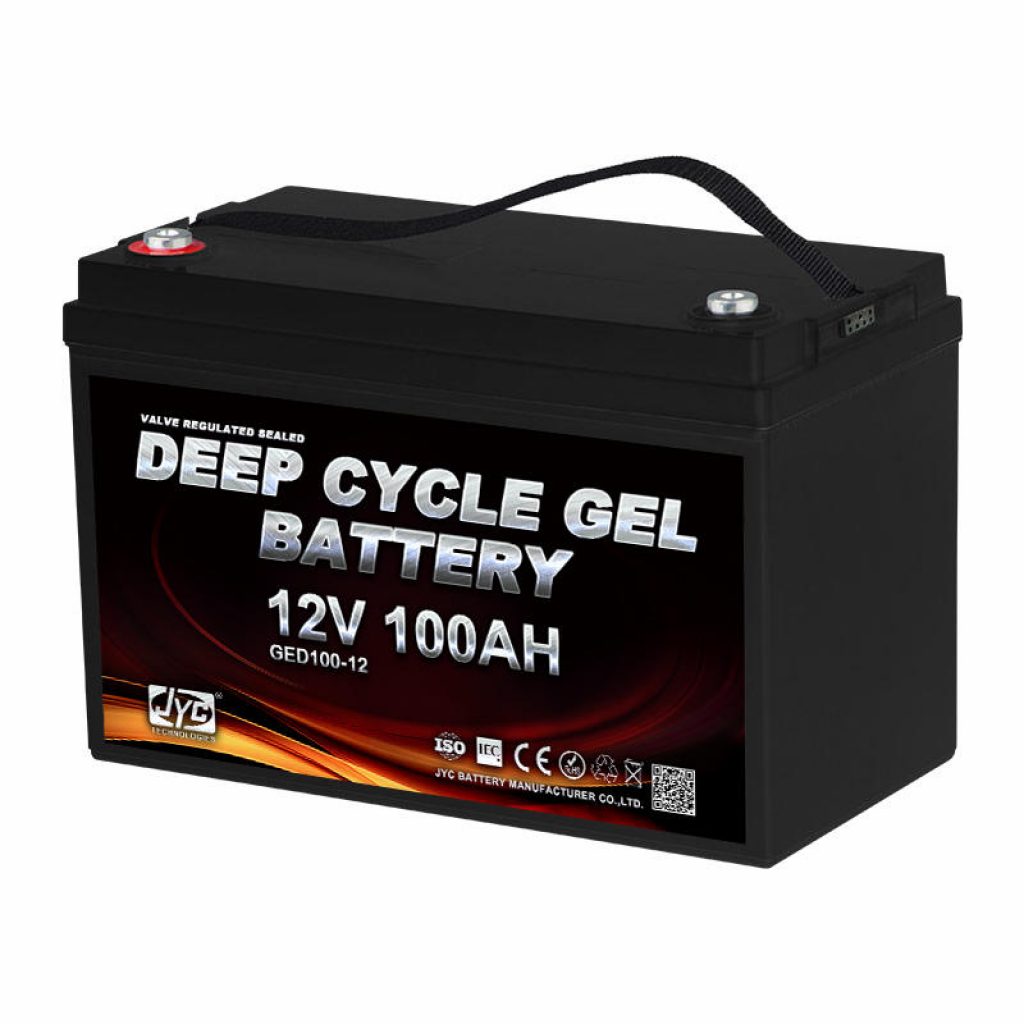
Source: meritsunpower.com
Gel batteries are pretty similar to AGM batteries. The difference between them is the separator that keeps the electrodes apart from each other. Because of their chemical similarity, the way in which you should care for them is also similar.
AGM maintenance practices also apply to Gel batteries.
How To Maintain a LiFePO4 Battery?
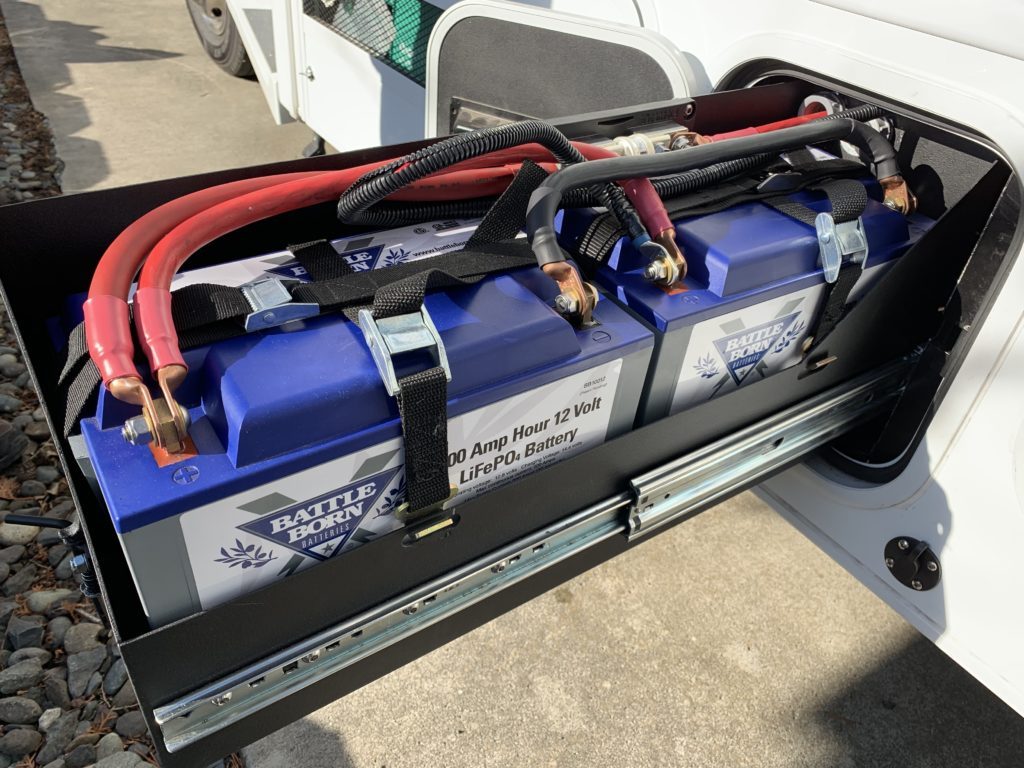
Source: evansoutdooradventures.com
Here are a few good practices that you can use to maintain your LiFePO4 battery:
Use The Correct Charger
once again, this is an important topic. Each battery chemistry has a different charging process, with different charging specifications. Applying a charging voltage different than the recommended will damage your battery.
Store It Properly
Due to its low self-discharge rate, storing this battery is not a problem, even for longer periods (of up to a year). However, before storing, you should charge them ideally between 50% to 60% state of charge. That will provide the battery a long time before the voltage drops to a dangerous point due to self-discharge. In addition, disconnect it from other devices to avoid parasitic loads.
Use A Charge Controller
A charge controller regulating the power output of solar panels can be extremely beneficial to your solar battery because it doesn’t allow over or undercharge, which decreases the battery’s lifespan.
Temperature Range
LiFePO4 suffer erratic charge or discharge in extreme temperature, which lowe their performance and overall lifespan. Ideally, you should keep your LiFePO4 battery between 5ºC(41°F) and 40ºC(104ºF).
Charge More Frequently
Unlike nickel-based batteries, lithium technologies don’t suffer from the memory effect. Therefore, the state of charge should always be between 20% to 90% to prolong battery life. This way, you can avoid the risk of overcharging or fully discharging your battery.
How To Maintain a Hydrogen Battery?
Hydrogen battery commercialization is still in its infancy. Although the science behind this technology is pretty solid, not many companies have managed to develop and commercialize this product yet.
Among the few companies that offer this type of battery are LAVO, HPS Home Power Solutions, and EFOY (this one doesn’t really count as a solar battery since integration with solar systems isn’t an option).
LAVO
You can integrate this battery into your solar power system. It stores energy by breaking molecules of water (2 H2O(l) → 2 H2(g) + O2(g)) and storing the hydrogen in a patented metal alloy, as a metal hydride. The fuel cell then converts the energy stored in hydrogen back into electrical energy by combining hydrogen — from the hydride storage vessels — and oxygen from the air to form water.
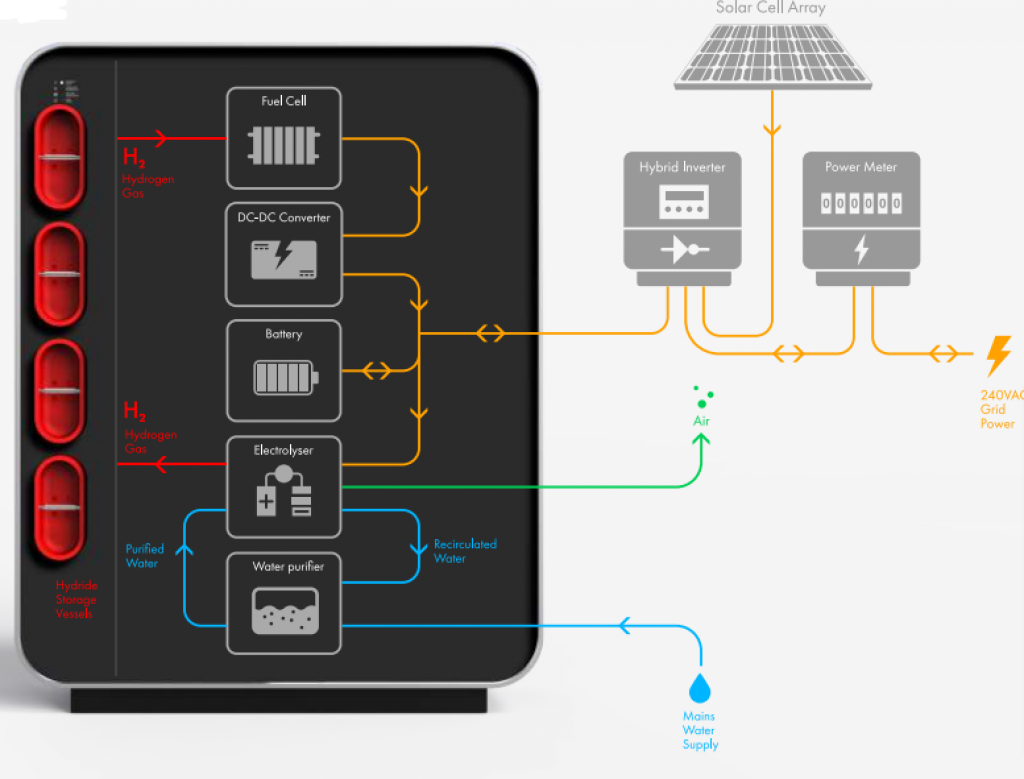
Source: lavo.com.au
Although there isn’t much available information on solar battery maintenance when it comes to hydrogen batteries, here’s what we have found:
Temperature
Although this battery can operate in a temperature range of -10°C to +50°C (14ºF to 122ºF), the recommended operating temperature is between 5°C to 45° C (41ºF to 113ºF)
Installation
Certified professionals should install this battery. It should be floor mounted, and kept outdoors – but still protected from external harm (rain, direct sunlight, etc).
Elevation
The maximum elevation in which this battery can still operate properly is 2000m.
Inverter
This battery requires a specific inverter. The LAVO unit is only compatible with a hybrid AC/DC solar power inverter, which the LAVO unit doesn’t include.
Water supply
the LAVO unit requires a connection to the mains water supply. It uses around 18L of water for a full charge cycle and it requires water to be at a potable standard. If you put in very hard or dirty water, the filters will still do their job but you’ll have to replace them much more often.
Input Power And Voltage
The input power is 2.2kW and the voltage is 48V DC.
Output Power Of The Fuel Cell
The peak output is 6.8kW. However, LAVO doesn’t recommend reaching the peak output for the longevity of the fuel cell and therefore the maximum output of the system should be 5kW.
In addition, on the LAVO website, the company recommends annual maintenance of the LAVO unit by a qualified technician.
5 Factors That Affect Battery Life
1. Depth of Discharge (DoD):
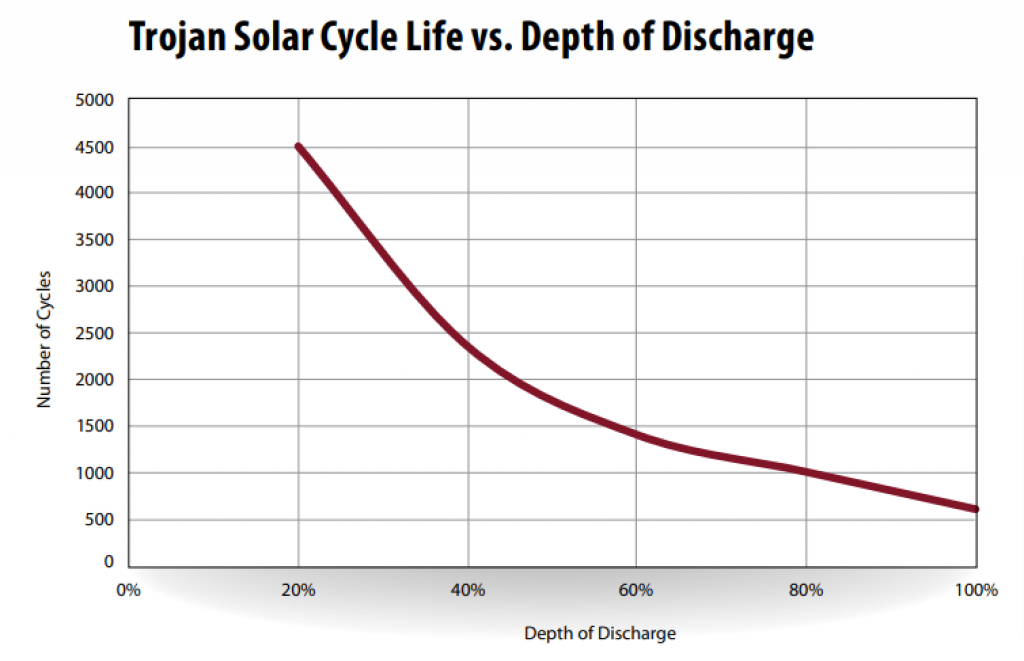
Source: trojanbattery.com
You shouldn’t fully discharge solar batteries. Each battery chemistry has a recommended DoD:
- AGM and Gel: recommended DoD is 50%
- LiFePO4 battery: recommended DoD is 80%
Respecting these recommendations, you’ll ensure your battery performs more cycles.
2. Charging Process
Using the correct charger is key to ensuring your battery performance.
Different battery chemistries require different charging specifications (charging voltage, charging current, float voltage, equalization, etc). For example, lead-acid batteries need to be equalized. Conversely, LiFePO4 batteries do not require balancing.
In conclusion, using an incorrect charger can cause the battery to charge erratically, decreasing its lifespan.
3. External Temperature
External temperature drastically affects battery performance. Therefore, you should always keep your battery in the recommended temperature range.
Temperatures too high or too low can diminish the battery’s ability to hold a charge by degrading its components.
Conversely, LiFePO4 batteries drain much faster in cold temperatures once they use part of their energy to keep themselves warm enough to function. This is quite harmful to the battery.
AGM and Gel batteries can withstand low temperatures without freezing, but exposing them to temperature extremes is still not recommended.
Ideally, you should keep your LiFePO4 battery between 5ºC(41°F) and 40ºC(104ºF). As for AGM and Gel, the ideal temperature ranges from -5ºC(23ºF) to +45ºC(113ºF).
4. Overcharge
Constant overcharging will damage your solar battery and consequently shorten its life.
Lead-Acid can be trickle-charged, but a lower voltage is applied. If the voltage doesn’t decrease once the lead-acid battery is fully charged, it will be overcharged. Likewise, the lifespan of your AGM or Gel battery decreases due to undercharging.
Conversely, LiFePO4 batteries are usually equipped with a Battery Management System (BMS) that cuts the external power when the battery is fully charged. This avoids overcharge. However, if your battery’s BMS fails to do so, overcharging your battery will decrease its overall lifespan.
Overcharging a battery can lead to unintended chemical reactions inside a battery cell, which can cause degradation of its components (electrolyte, electrodes, and separator). As a result, lifespan decreases.
5. Store When Not In Use Use
If you ever need to store your solar battery, do so in a dry space with good ventilation. Store your battery away from sunlight and maintain a relatively steady temperature.
Manufacturers usually recommend storing LiFePO4 batteries with a charge of around 50%. These batteries don’t self-discharge as much as their lead-acid counterparts, so they don’t need to be recharged often.
In contrast, due to their high self-discharge rate, AGM and Gel batteries should be boost charged every 90 days or when they reach approximately 75% state of charge.
That’s because a battery can fall into a “deep discharge state” if stored fully discharged. Conversely, if stored fully charged, a battery may lose some capacity, resulting in shorter battery life.
Final Thoughts
Solar battery maintenance is key to ensuring you get the most out of your investment.
By following a few simple practices, you can keep your solar battery running at optimal performance levels and extend its lifespan.
This article discussed solar battery maintenance for the main types of batteries: LiFePO4, AGM, and Gel batteries. Keep this information in mind when choosing or caring for your solar battery system, so you can enjoy the benefits of renewable energy for years to come!

